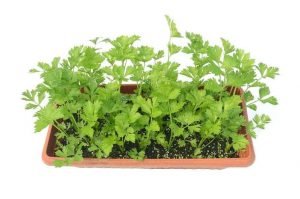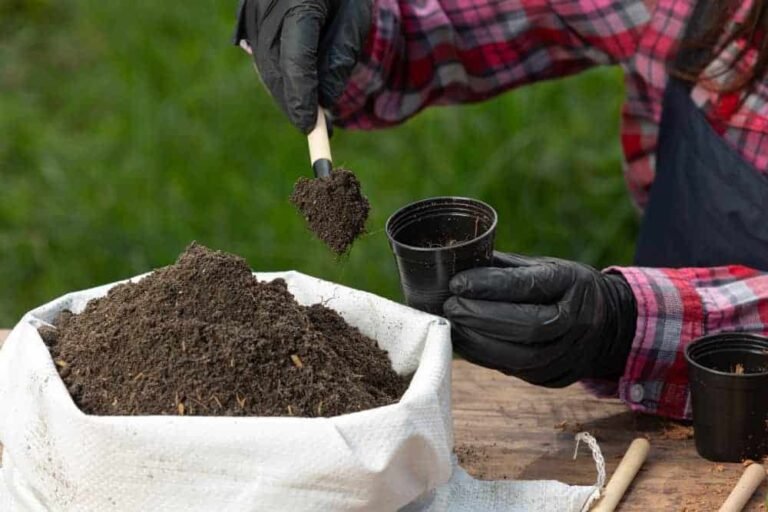How to Grow Your Celery at Home and Get Good Harvest

Do you love eating celery and would like to grow them yourself?
Or are you tired of always getting your celery from a grocery store when you could actually plant them yourself?
Well, here is a chance for you to know more about this crop and all the processes involved in growing this beautiful and sumptuous veggie.
Celery is a staple crop.
People use it as an essential ingredient in stews, stir-fries, and salads around the world today.
It tastes crunchy and is constantly utilized by various chefs to make world-class recipes.
It is a biennial crop that adds flavor and spice to food.
Now let’s dig deeper into the history of celery.

Botanical Name and Family of Celery.
The botanical name of celery is Apium graveolens.
Celery is from the Apiaceae family.
Some other members of this family include parsley, celeriac, and carrots.
It has a crunchy stalk which provides a lot of health benefits.
Learn how to grow carrots step-by-step in this article How to Grow Carrots Step-By-Step in the Garden
Why Choose to Grow Celery Instead of Buying?
Celery is a veggie that has always been in high demand over the years.
Vegetarians would make do of this crop from time to time.
However, what is the benefits or reasons for growing them within your private space?
Like every other plant, celery has a nice scent that purifies the air around you.
Also, homegrown celery is free of toxic chemicals and contains a lot of beneficial nutrients.
It even tastes better.
Being able to properly monitor the soil, manure and even amount of sunlight and water used in growing your celery is worthwhile.
This gives one the assurance that the celery is standard and has all the needed nutrients.
Conditions Necessary for Growing Celery
It is advisable for you to grow your celery during the spring weather.
However, in hotter places, celery is grown between mid and late summer.
The need to know the time, variety, amount of sunlight and water, spacing and other phenomena play important roles in ensuring the survival of your plant.
In view of this, here are some essential tips you could hold on to as you grow your celery;
Climate and Temperature
There are various varieties of celery among which are the Tango Variety, Tall Utah Variety, and Chinese Pink Variety.
These varieties grow under various conditions and could have slightly different colors.
For instance, a variety like the Tango variety is very resistant to harsh weather conditions like heat and lack of adequate moisture.
Climate could dictate the growth rate of celery.
Celery requires cool weather.
For people living in desert areas or hot places, providing shade for the plants can help them survive the not-so-friendly weather conditions.
Learn how to grow onions in this article: How To Grow Onion 2022 | From Planting to Storage
Sunlight
Sunlight is vital when growing mulch vegetables like celery.
It does not require excess sunlight.
If you are growing it in an outdoor garden, you should expose them to about 6-8 hours of sunlight every day.
However, if you are growing it in a flower pot inside the house, you can expose it to light for no less than 16 hours daily.
Water
Water gives veggies a tender and healthy appearance.
Most vegetables could die easily if there is not enough moisture.
Therefore, keep your celery moisturized by watering it every day if the temperature is above 70°F.
Also, if the temperature drops below this value, you can water it every other day.
Spacing
For your very to thrive well, you need to give it space to grow and sprout comfortably.
Gardens with celery plants require proper spacing to prevent overcrowding.
You wouldn’t want your green veggies to compete for nutrients, would you?
To prevent such an occurrence, you can use the standard spacing of about 6 or 12 inches.
For a flower pot, the pot must be 30cm deep and 30cm wide to accommodate about 4 celery stalks.
Soil requirements
The soil type for your celery is an essential factor you should put into consideration before you start planting.
The soil has to be rich in organic compost. Celery survives in the soil with a pH between 5.8 and 6.8.
Make use of well-tilled soil rich in compost.
The soil should have about a depth of 2-4 inches of manure or compost topping.
- 10 Pro Tips on How to Take Care of Succulents
- 6 Uses For IBC Totes On The Farm
- Revolutionizing African Agriculture: The Potential of Bokashi Composting
- Cucumber Farming: How to Plant, Grow, and Harvest Cucumbers
How to Grow Celery
The most edible part of a celery plant is the stalk which ranges from 12 to 18 inches.
One can grow celery either by trenching or blanching.
Trenching Celery is grown in trenches (molded-up soil) while blanching celery does not require this step.
Here are some step-by-step procedures you can follow when planting celery.

Step 1: Soil Preparation
Choose a location that would give space for the celery to receive sunlight.
Mix the soil and manure carefully in the nursery pot you intend to use.
Step 2: Water
Celery vegetables need a lot of water. The soil should have enough moisture to cater to the needs of the plant.
It is important to leave the seeds in water overnight before planting day.
Step 3: Planting
Carefully spread the seeds on the surface of the soil with a spacing of about one inch.
When the seedlings become 2-3 inches taller, you should change the spacing.
One could even transfer them to individual pots.
Press the soaked seeds into the soil, but do not allow the soil to cover them.
It allows for speedy growth, normal germination should start between one to two weeks.
Enclose the pot with a plastic cover to preserve the soil water.
Step 4: Provide a Good Condition for Growing the Celery Plant
When your celery has been planted, the next stage is growing.
These are the things you need to put in place for your celery to grow well.
Temperature
Once the seedlings start appearing, allow them to get an adequate amount of temperature.
This should be about 70 to 75°F (21-26°C ) during the day and 60-65°F(15-18°C) at night.
Light
Use a grow light to supply light for about 16 hours every day.
Gradually expose the seedlings to outdoor light in preparation for transplantation when they are mature enough.
Step 5: Transplant the Celery Seedlings into Your Garden
When your seedlings are mature enough, you can transplant them.
This gives your seedlings more space to grow.
You can decide to transplant it into a bigger pot or into your garden directly.
Step 6: Care for the Plant after Transplanting
Water your plant frequently after transplanting.
After transplanting, ensure the seedlings are up to 6 inches apart.
The temperature should not be lower than 40°C at night and 50°C during the day.
In very cold temperatures when there is frost, provide a frost blanket for the celery in order to keep them alive.
Mulching is required as the celery grows older. This is to keep the soil moisturized. You can do this when the celery stalks are about 6-8 inches in height.
Use row covers to protect the seedlings from pests the first few weeks after transplanting.
Step 7: Weed the Plant Regularly in the Garden
Ensure you weed the celery garden regularly.
Avoid the celery sprawling by tying the stalks together as they grow older.
As soon as the celery stalk is a foot tall, you can start trenching if it is a trenching variety.
Cover the stalk with soil up to 3 inches high.
Step 7: Protect the Celery Plant from Sun by Blanching
In the garden, blanching means covering up and protecting parts of vegetable plants from the sun.
In doing this, make sure you do not cover the celery leaves completely.
This is because it stops photosynthesis.
To do blanching, use materials like brown paper, milk cartons, and cardboards to cover the stalks.
This gets rid of any unfavorable taste, however, the celery may appear pale.
How To Harvest Celery
The best season to harvest celery is summer through to autumn.
It is possible to harvest but it is advisable to cut their stems allowing them to keep growing over a long period.
The pale stalks contain fewer nutrients than the darker ones which are harder.
You can follow this guide when your celery is mature enough to be harvested:
- Celery stalks that are 8 inches tall or more are suitable to be harvested.
- Harvest the celery stalks from the outside in.
- Once the colds start hitting, the possibility of the celery withstanding the weather reduces. You can harvest your celery before this time.
How to Store Celery.
Once harvested, celery stalks need to be stored under very cold temperatures.
You first wash them and cut them up into smaller sizes.
After this, you can then store it in the refrigerator.
One can also have the celery dried and canned.
Celery can last up to a month inside the refrigerator.
Be rest assured that it will still retain its fresh and tender look.
Health Benefit of Using Celery
The impact of eating on one’s health is quite numerous.
Even the skin is not left out of these endless benefits.
Celery is a vegetable known for its stalks and like other vegetables.
It is a good source of minerals and nutrients.
These are only a few of the advantages of celery.
Let’s discuss some of the others:
1. Medicinal advantages:
Celery has been used as a weight-loss therapy for a very long time.
Celery Is a low-calorie diet food.
This is why it is effective in aiding those who wish to lose some of their body fat.
It even maintains the skin and allows for proper metabolism of the body systems.
Physicians between 850BC and the 17th century utilized celery as a means of curing Rheumatoid Arthritis and Chronic pulmonary catarrh.
2. Source of Antioxidants, Anti-inflammatory nutrients, and Vitamins:
Celery contains the vitamins C, A, K, and beta carotene.
Vitamin C contains antioxidants that preserve the body cells and vascular system.
They prevent oxidative destruction.
Celery also has low sugar content.
It is a good diet option for people who are diabetic and need to control their blood sugar levels.
3. Celery Aids Digestive Processes:
It has a water content of about 95% and this allows proper movement of food through the digestive tract.
Celery also has abundant antioxidants, pectin, and anti-inflammatory nutrients.
These help to protect the mucosa of the alimentary canal guiding against the risk of stomach ulcers and digestive tract irritations.
4. Celery can neutralize some acidic foods:
Celery contains alkaline elements like magnesium and iron that can neutralize acidic foods.
Pests And Diseases Of Celery And Their Prevention
There are various pests and diseases that could affect celery crops, some of them are stated below;
Pests:
- Earwigs: They are insects that leave many small holes in the leaves and stalks. The remedy for this is to evacuate every debris and first around the plant that can be a dwelling place.
- Snails and slugs: These organisms deposit slippery secretions on the leaves. They also eat the leaves. One can handpick them, cover the soil with boards in the evening and also reduce the amount of overhead watering of the leaves.
- Flea Beetles: These insects look like leaves and can camouflage themselves. They leave various tiny spots on the leaves. One can mulch the soil immensely and use traditional plants to attract advantageous insects.
- Carrot rust flies: These insects cause root rot and stunted growth of the crop. They give the roots a rust-like color. The major prevention techniques to combat include mulching, rotating crops frequently, and using row covers.
Diseases:
- Mosaic virus: This is a viral disease that affects plant growth. It causes wilting, stunted growth, and yellow or white patches on the leaves. What can be done to prevent the rampage of such a disease? Learn to disinfect garden tools, Mulch the soil, weed, and even use seeds that have high resistance.
- Blight, Black Heart, And Pink Rot: These are also diseases that can affect celery growth. One should apply enough magnesium and calcium to avoid this occurrence.
Most Appropriate Varieties Of Celery To Grow
- Tall Utah Variety: This variety can withstand adverse weather conditions like heat and cold weather. It can grow even in little spaces to as tall as 45cm (18 inches)
- Conquistador Variety: It is a variety of celery that can grow in less than optimal conditions. It can survive low moisture, heat, and moderate soil fertility.
- Afina Variety: It can grow up to 75cm. It grows fast and appears as a dark green veggie.
- Tango Variety: This type of celery can also survive harsh weather situations. It is quite tender and not as fibrous as other varieties.
- Golden self Blanching Variety: This celery has very peculiar stalks which are stringless. It is short and is reasonable for smaller planting spaces.
Other varieties of celery include the Chinese pink, Ventura, Starlet, and the Giant red varieties.
Tips for Growing and Caring for Celery Plant
- Keep the celery plants in good condition by watering them when required.
- Use soil rich in compost.
- Allow for proper sunlight and adequate spacing among the celery stalks.
- Blanch the celery to eliminate the bitter taste and acquire a tasty stalk. Do this 10 to 14 days before the harvesting day.
- Weed the plant beds regularly.
Conclusion
Having reviewed everything you need to know about celery and how to grow it, you can now own your celery garden.
It is a very tasty ingredient for various dishes.
It also serves as a supplement.
You can probably even munch on the celery gotten from your garden at your convenience.
Do you have more questions about celery planting? You can post it in the comment section.
Frequently Asked Questions (FAQS)
How long does it take celery to grow?
Celery takes a long time to fully mature.
It takes between 130 to 140 daysDo I need to fertilize my celery?
Yes.
Before planting, loosen the soil to a depth of 12 to 15 inches.
Mix 2 to 4 inches o manure and/or compost into the soil.
You can also work in some 5-10-10.How do you know when celery is mature enough to harvest?
As soon as your celery is about 6 inches or more in length from the soil lie to the first leaf, it is mature to harvest.
Is chicken manure good for celery?
Yes.
Celery likes high-nitrogen soil.
So, a chicken manure fertilizer would do amazing work on your celery.
REFERENCES
- 10 Pro Tips on How to Take Care of Succulents
- 6 Uses For IBC Totes On The Farm
- Revolutionizing African Agriculture: The Potential of Bokashi Composting
- Cucumber Farming: How to Plant, Grow, and Harvest Cucumbers
- Okra Cultivation Guide – The Step-By-Step Okra Farming Procedure
- Cucumber Companion Planting [The best and the worst crop to grow with cucumber]





